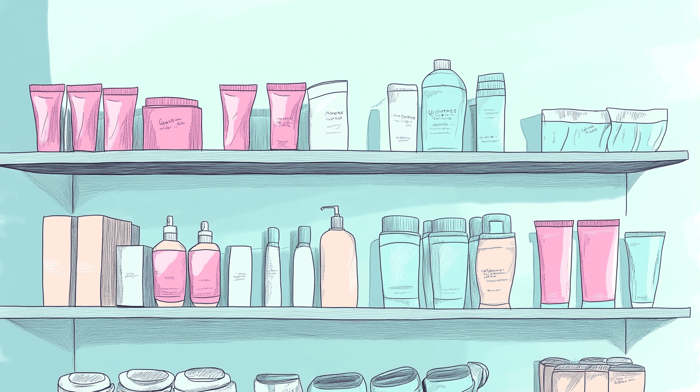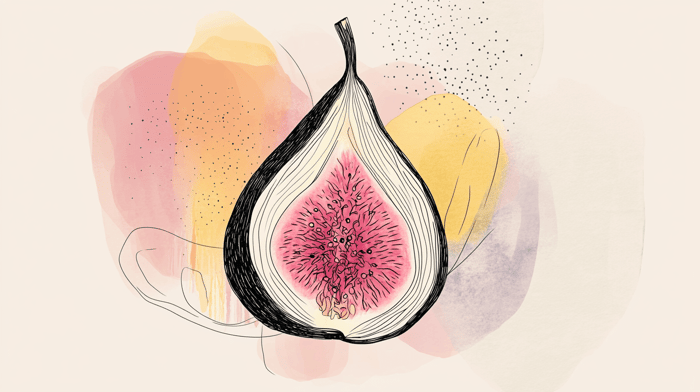It’s that time again, and you're in the feminine hygiene aisle. Tampons to the left, menstrual cups to the right. Which one do you choose?
There’s a lot of buzz about menstrual cups these days, and while they work great for many women, they aren’t for everyone. Tampons have been around for decades, offering convenience and familiarity. So, how do you decide what's better for your vaginal health and overall well-being?
This guide will break down the pros, cons, and health implications of both tampons and menstrual cups to help you make the right choice.
Pros and Cons of Tampons
What Are Tampons?
Tampons are small cotton plugs that fit inside the vagina to absorb menstrual blood. They often come with an applicator for easy insertion and a string for removal.
Benefits of Tampons
- Super Convenient: Tampons have been around for nearly a century and are readily available in different absorbencies.
- Discreet: Once inserted, tampons are virtually undetectable, making them a comfortable choice for many women.
Drawbacks of Tampons
- Toxic Shock Syndrome (TSS): Although rare, wearing a tampon for too long can lead to this serious condition. Regular changes reduce this risk.
- Environmental Impact: Most tampons are not biodegradable, contributing to landfill waste.
Pros and Cons of Menstrual Cups
What Are Menstrual Cups?
Menstrual cups collect, rather than absorb, blood. They can stay in place for up to 12 hours and are reusable, making them an eco-friendly option.
Benefits of Menstrual Cups
- Eco-Friendly: Reusable and biodegradable, menstrual cups are a sustainable alternative to disposable tampons.
- Cost-Effective: A one-time purchase can last up to 10 years, saving you money in the long run.
- Less Leakage: Cups hold more blood than tampons, reducing the chance of leaks.
Drawbacks of Menstrual Cups
- Risk of Infection: If not cleaned properly, menstrual cups can introduce bacteria, leading to infections.
- Learning Curve: Inserting and removing menstrual cups takes practice, and some women may find it difficult to use.
How They Affect Your Vaginal Health
Vaginal pH and Flora
Tampons: Tampons absorb not only blood but also vaginal moisture, potentially leading to dryness and pH imbalance.
Menstrual Cups: Since cups collect blood without absorbing moisture, they may maintain a healthier vaginal environment.
Material Considerations
Tampons: Made of cotton and rayon, some tampons may contain chemicals from the bleaching process that could affect vaginal health.
Menstrual Cups: Made from medical-grade silicone or rubber, menstrual cups are generally safer for long-term use.
Switching Between Tampons and Menstrual Cups
- Start Slow: If you're unsure, try alternating between tampons and menstrual cups to see which you prefer.
- Educate Yourself: Watch tutorials and read instructions on how to properly use both products.
- Listen to Your Body: Comfort is key. If one product doesn’t feel right, it’s okay to switch.
Proper Disposal and Care
Disposing of Tampons
- Wrap used tampons in toilet paper or their original wrapper.
- Never flush tampons down the toilet; they can cause plumbing issues.
Cleaning Menstrual Cups
- Store in a breathable pouch, not airtight containers.
- Wash with mild soap and water, then disinfect in boiling water between uses to prevent infections.
Common Mistakes to Avoid
With Tampons:
- Not changing them frequently enough, which increases the risk of TSS.
With Menstrual Cups:
- Improper sealing, leading to leaks.
- Failing to sterilize the cup can lead to infections.
Wrapping Up
Both tampons and menstrual cups have their pros and cons. Your choice depends on what feels right for your body and lifestyle. Prioritize your comfort and health above all when making the decision.











